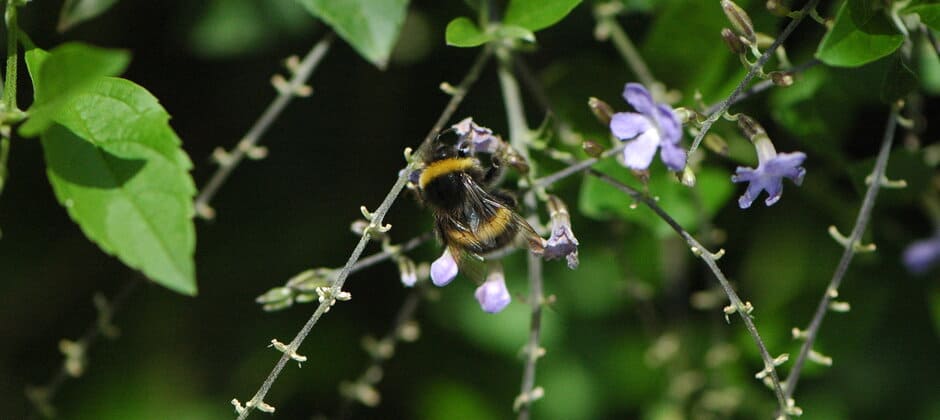Share this article
Weed-killing ingredient may drown bees
A chemical included in many common herbicides used around the world could suffocate and kill bumblebees.
Edward Straw first read about the possibility that glyphosate, the most commonly used chemical in herbicides as well as pesticides, causing bee fatality in a study conducted in Ghana that was published in 2018. The researchers determined the products containing the chemical could kill the pollinators in laboratory conditions, but Straw was skeptical about the results.
“Glyphosate has relatively low toxicity to bees,” said Straw, a PhD student at Royal Holloway, University of London. So it was surprising that products containing the chemical was causing death.
In a quick experiment, Straw bought a commercially available product containing the chemical and sprayed it on a bee to see what would happen. He was surprised to see that the bee died within a matter of minutes.
Straw and his co-authors, Edward Carpentier and Professor Mark Brown, decided to conduct further research on the subject in the laboratory, and published a study on their findings recently in the Journal of Applied Ecology.
They gathered several different brands of herbicides, some containing glyphosate and some without, and applied the different herbicides to bumblebees (Bombus terrestris audax) in the laboratory. Then, they watched what happened.
“A lot of those substances were capable of causing quite high levels of mortality,” Straw said. “But it varied from substance to substance.”
Not all products with glyphosate killed bumblebees, for example. Instead, Straw said it’s probably a group of chemicals included in the products, but not listed on the label, that are known as surface acting agents, or surfactants.
Just as droplets of water, when small enough, look like tiny balls of liquid, glyphosate dissolved in liquid is no different. Surfactants are needed to spread the weed-killing chemical more evenly across the plant leaves it touches rather than having it remain in a droplet form.
But these surfactants don’t discriminate between leaves and bumblebees. When the herbicide strikes the insects, it ensures that the liquid spreads evenly over their bodies.
Straw isn’t positive why this leads to the bees’ deaths, but he believes it may suffocate them. Like many insects, bumblebees breathe through a series of holes on their bodies rather than through their mouths. The herbicide, spread across their bodies, may be essentially drowning them.
However, not all surfactants are the same. Straw and his co-authors would be able to determine exactly which surfactants were used in each case, but individual mixtures of chemicals used are the intellectual property of the companies that hold the patents.
In other words, the researchers can’t further verify which surfactants may be the culprits due to intellectual property laws. He said that lawmakers should reexamine these rules, as researchers can’t study potentially negative impacts without knowing what’s being sprayed in the environment.
He also noted that there are implications for regulations regarding the use of some chemicals. When approving the use of chemicals, regulators often only test the toxicity of active ingredients like glyphosate in products, letting potentially damaging chemicals like these surfactants slip under the radar.
Since this study was just conducted in the lab, Straw said it’s difficult to say what kind of effect these chemicals could have with regards to the ongoing decline of bee populations and diversity occurring across the world.
But it’s possible that herbicides containing these surfactants could play a role in pollinator declines.
Header Image: A European buff tailed bumblebee on a flower. Bees similar to these can be killed by some common herbicides. Credit: liesvanrompaey








